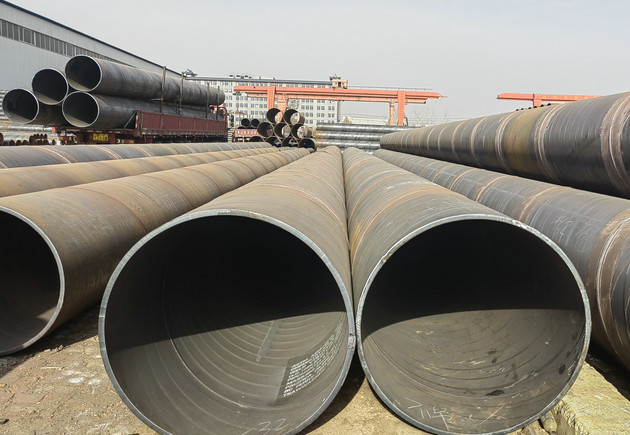Before the welding process of spiral welded steel pipes, the welding engineer should make a technical briefing to the foreman and welder on the specific welding matters, and work with the foreman to check the equipment and intactness of the welding equipment; the welder equipment and qualifications meet the process requirements; the welding materials Comply with process requirements; suitability of welding environment.
The processing, preparation and assembly of the grooves are carried out strictly in accordance with the requirements of the drawings. The bevel processing should be mainly carried out by mechanical processing. If plasma arc cutting is used, the oxide, slag, spatter, etc. on the surface of the cut should be cleaned until it emits a metallic luster. The processed grooves must be inspected to ensure that there are no defects such as cracks, pores, slag inclusions, unevenness, or gaps.
The welds of spiral welded steel pipes should be staggered at the joints. The staggered spacing should not be less than 80mm, and strong alignment is prohibited. For joints with unequal thicknesses of the upper and lower circle plates, priority should be given to ensuring that the inner walls are flush. After the assembly is completed, spot welding is performed. The length of the welding spot is about 50-60mm, the thickness is not less than one-third of the plate thickness and not less than 3mm, and the spacing is not less than 400mm. The spot welding seam must not be defective, otherwise it should be re-spot welded. The materials, welding processes and welders used for spot welding should be the same as those used for formal welding.

After spot welding, the next welding process should be carried out immediately without staying for a long time. For butt joints, attention must be paid to the welding of the bottom layer (base layer) to ensure good penetration and backside formation, as well as good fusion with the spot welds.
In order to prevent overburning and overoxidation during welding, in addition to using small current specifications, thin welding wires (strips), fast, multi-layer and multi-pass welding processes should also be used, without swinging during welding. This also helps to form the weld well and prevent welding deformation.
To prevent splash damage to the pipe surface, apply chalk powder within 150mm on both sides of the joint before welding. For multi-layer (pass) welds, the joints between the layers (passes) must be staggered, the molten pool at the arc starting and closing points must be filled, and inter-layer defects must be dealt with in a timely manner, and the joints must be welded continuously in one go, without any intermediate Long stay.
When welding large diameter
welded steel pipes, symmetrical welding methods must be used to prevent deformation.
After welding is completed, inspect the welds and welds that do not meet the requirements must be dealt with in a timely manner. The welding of accessories on the pipeline should be carried out after the pipeline installation is completed, but the intersection with the welds on the pipeline should be avoided as much as possible, and the distance between them should be more than 150mm.
During the welding process, welders should strictly abide by process disciplines, strictly implement the provisions of process documents and pay attention to the following requirements:
a) Welding parameters should be adjusted according to process requirements before welding, but debugging on the product is strictly prohibited; adjustment of specification parameters is not allowed during the welding process;
b) Ensure the quality of the arc closing and arc starting points, and it is strictly prohibited to ignite the arc on the surface of the base material;
c) If pores, cracks, slag inclusions and other defects are found, they should be removed in time before welding can continue:
d) If the welding process is interrupted for any reason, re-welding should be carried out according to the process requirements;
e) After the welding is completed, clean the surface of the weld and the surrounding area in a timely manner, and stamp the welder's stamp or make other marks as required.


